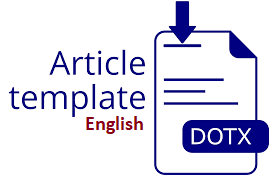Penerapan Metode Fisher Yates Shuffle Pada Game Edukasi Pendidikan Agama Islam
DOI:
https://doi.org/10.47065/bulletincsr.v4i3.344Keywords:
Learning; Religion; Unity 3D; Fisher Yates Shuffle; GameAbstract
Since childhood children must be familiarized with various teachings about religion. Where in the teaching process there is a need for software that is suitable for children, namely learning software in the form of educational games. Because with the existence of educational games, learning that was originally considered troublesome, difficult, boring and tiring can be an increase in motivation for students in studying Islam besides that, the purpose of this study can provide knowledge about the basics of Islamic religious learning from an early age through educational game applications and make student learning more interesting and fun. Educational games in this system by displaying learning menu options that will be selected by the user and quiz using randomized questions. Programs needed to create this application include unity 3D which uses the C# programming language and uses additional supporting software, namely adobe photoshop CS6. For the development model using the Interactive Multimedia System of Design and Development model while for the randomized question process using the fisher yates shuffle method which consists of 40 questions but for those displayed on the quiz only 10 questions so that each question will change for each student. The results with this educational game can prevent student cheating when answering questions and can increase students' concentration and interest in learning in using educational games.
Downloads
References
A. H. Hamim, M. Muhidin, and U. Ruswandi, “Pengertian, Landasan, Tujuan dan Kedudukan PAI Dalam Sistem Pendidikan Nasional,” J. Dirosah Islam., vol. 4, no. 2, pp. 220–231, 2022, doi: 10.47467/jdi.v4i2.899.
I. Ali, “Pembelajaran Kooperatif Dalam Pengajaran Pendidikan Agama Islam,” J. Mubtadiin, vol. 7, no. 1, pp. 247–264, 2021, [Online]. Available: http://journal.an-nur.ac.id/index.php/mubtadiin/article/view/82.
Y. Syafrin, M. Kamal, A. Arifmiboy, and A. Husni, “Pelaksanaan Pembelajaran Pendidikan Agama Islam,” Educ. J. Pendidik., vol. 2, no. 1, pp. 72–77, 2023, doi: 10.56248/educativo.v2i1.111.
J. R. Widayati, R. Safrina, and Y. Supriyati, “Analisis Pengembangan Literasi Sains Anak Usia Dini melalui Alat Permainan Edukatif,” J. Obs. J. Pendidik. Anak Usia Dini, vol. 5, no. 1, p. 654, 2020, doi: 10.31004/obsesi.v5i1.692.
Siti Nur Hayati and K. Z. Putro, “Bermain Dan Permainan Anak Usia Dini,” Gener. Emas, vol. 4, no. 1, pp. 52–64, 2021, doi: 10.25299/jge.2021.vol4(1).6985.
T. Hadi, N. Suarna, A. I. Purnamasari, O. Nurdiawan, and S. Anwar, “Game Edukasi Mengenal Mata Uang Indonesia ‘Rupiah’ Untuk Pengetahuan Dasar Anak-Anak Berbasis Android,” J. Ris. Komputer), vol. 8, no. 3, pp. 2407–389, 2021, doi: 10.30865/jurikom.v8i3.3609.
M. Alba, P. Parjito, and A. T. Priandika, “Media Game Edukasi Berbasis Android Untuk Pembelajaran Benda Hidup dan Tidak Hidup,” J. Inform. dan Rekayasa Perangkat Lunak, vol. 4, no. 1, pp. 29–40, 2023, doi: 10.33365/jatika.v4i1.2456.
Asykur, “Subjects At Mts Al-Irsyadiyah Sarirejo Lamongan Pengembangan Mobile Learning Berbasis Android Pada Mata Pelajaran Al-Qur ’ An Hadist Di Mts Al-Irsyadiyah Sarirejo Lamongan,” Diklat Keamanan, vol. 15, no. 1, pp. 26–34, 2020.
A. Ramadhan, “Algoritma Fisher-Yates Shuffle Pada Game Edukasi Jumble Hijaiyah,” J. Teknol. Inform. dan Komput., vol. 8, no. 1, pp. 94–106, 2022, doi: 10.37012/jtik.v8i1.759.
F. Fujiati and S. L. Rahayu, “Implementasi Algoritma Fisher Yate Shuffle Pada Game Edukasi Sebagai Media Pembelajaran.,” CogITo Smart J., vol. 6, no. 1, pp. 1–11, 2020, doi: 10.31154/cogito.v6i1.174.1-11.
Y. Hendriyani and R. Aurora, “Rancang Bangun Aplikasi Pengenalan Hewan Pada Kebun Binatang Bukittinggi Berbasis Augmented Reality Dengan Metode Markerless,” Voteteknika (Vocational Tek. Elektron. dan Inform., vol. 11, no. 1, p. 103, 2023, doi: 10.24036/voteteknika.v11i1.120276.
N. K. A. ,. M. &. S. S. Humairoh, "Pembangunan Aplikasi Game Gerbang Dengan Menggunakan Metode IMSDD," Jurnal of information system and informatics, vol. 2, no. 1, pp. 1-11, 2020.
F. Herawati and B. Suranto, “Perancangan Aplikasi Pembelajaran Pendidikan Agama Islam,” JIRE (Jurnal Inform. Rekayasa Elektron., vol. 6, no. 2, pp. 220–227, 2023.
W. Firdiansyah and R. Pradana, “Penerapan Metode Fisher Yates Shuffle Pada Game Edukasi 3D Alat Musik Tradisional,” Pros. Semin. Nas. …, vol. 2, no. September, pp. 1766–1774, 2023, [Online].
K. Vebiant, M. I. Wahyuddin, and R. T. Komala Sari, “Rancang Bangun Media Pembelajaran Tenses English Berbasis Android menggunakan Algoritma Fisher-Yates,” J. JTIK (Jurnal Teknol. Inf. dan Komunikasi), vol. 5, no. 4, p. 407, 2021, doi: 10.35870/jtik.v5i4.246.
V. Asih, A. Saputra, and R. T. Subagio, “Penerapan Algoritma Fisher Yates Shuffle Untuk Aplikasi Ujian Berbasis Android,” J. Digit, vol. 10, no. 1, p. 59, 2020, doi: 10.51920/jd.v10i1.156.
M. F. Londjo, “Implementasi White Box Testing Dengan Teknik Basis Path Pada Pengujian Form Login,” J. Siliwaangi, vol. 7, no. 2, pp. 35–40, 2021.
Bila bermanfaat silahkan share artikel ini
Berikan Komentar Anda terhadap artikel Penerapan Metode Fisher Yates Shuffle Pada Game Edukasi Pendidikan Agama Islam
ARTICLE HISTORY
How to Cite
Issue
Section
Copyright (c) 2024 Ahmad Thariq, Husaini, Apriani Pattimura

This work is licensed under a Creative Commons Attribution 4.0 International License.
Authors who publish with this journal agree to the following terms:
- Authors retain copyright and grant the journal right of first publication with the work simultaneously licensed under Creative Commons Attribution 4.0 International License that allows others to share the work with an acknowledgment of the work's authorship and initial publication in this journal.
- Authors are able to enter into separate, additional contractual arrangements for the non-exclusive distribution of the journal's published version of the work (e.g., post it to an institutional repository or publish it in a book), with an acknowledgment of its initial publication in this journal.
- Authors are permitted and encouraged to post their work online (e.g., in institutional repositories or on their website) prior to and during the submission process, as it can lead to productive exchanges, as well as earlier and greater citation of published work (Refer to The Effect of Open Access).














